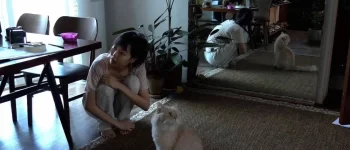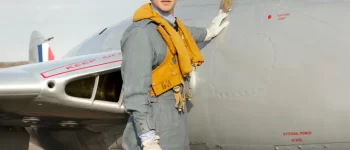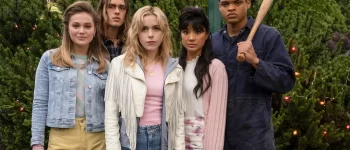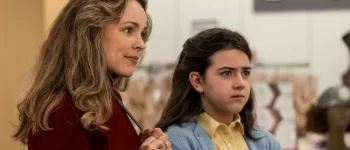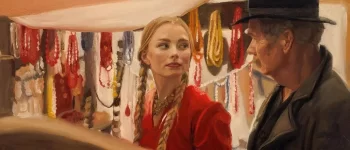Director Katja Gauriloff has made history with “Je’vida,” the first feature shot in the Skolt Sámi language.
- Venice Winner Arsalan Amiri on Censorship in Iran and Busan APM Project ‘For The Girls Of The Tribe’
- ‘Eras Tour’ Surprise: Taylor Swift’s Concert Film Opens in Theaters One Day Early
- Marco Chimenz, Co-CEO of Italy’s Cattleya the prominent ITV-owned outfit behind “Gomorrah” and “ZeroZeroZero,” will be leaving the company in January to join pan-European powerhouse Federation Studios. At Federation Chimenz will serve as group co-managing director of the expanding production and distribution studio that currently comprises 35 production companies, working closely with founder and CEO Pascal Breton and Federation co-director Lionel Uzan. Founded in 2013, Federation is a production, financing and distribution studio with subsidiaries and associate production companies based in Paris, Los Angeles, Rome, Madrid, Berlin, Cologne, London, Brussels and Tel Aviv. The group’s best-known titles include “The Bureau,” “In Treatment,” “Baby,” “Hostages,” “Marseille,” “Bad Banks,” “Your Honor,” and “Around the World in 80 Days.”
- Japanese Erotic Classic ‘Lost Paradise’ and Cannes Best Actor Prizewinner Yakusho Koji Set for Golden Horse Festival Showcase
- Onza Distribution Snaps Up International Sales to Parox’s ‘Allende, the Thousand Days’ (EXCLUSIVE)
“It’s my native tongue, but because of forced assimilation in Finland [of the Sámi people] I didn’t actually learn it. I am studying it only now,” she tells Variety ahead of the Toronto premiere.
“It’s endangered: we have only 300 speakers. There is maybe one village where it’s still in everyday use, which also influenced casting. But we are doing everything we can to keep it alive.”
In “Je’vida,” starring Sanna-Kaisa Palo and “Compartment No. 6” breakout Seidi Haarla, not all actors are Sámi.
“It was a compromise, of course, because I had to be realistic. But also, we are talking about people who are changing cultures. These two women are fully Finnish, so they shared their characters’ confusion. That being said, I would love to make a film with an all-Sámi cast one day,” says Gauriloff.
Her own cousin, Heidi Juliana Gauriloff, acts in the film.
“Many of the actors are my relatives. There are so few of us.”
In the story, Iida and her artist niece, one she barely knows, head to the north of Finland. They are supposed to clear out her childhood home, but the memories she tried to forget keep bouncing back.
Awarded at Helsinki’s industry event Finnish Film Affair last year, the film was produced by Joonas Berghäll, Satu Majava and Anna Nuru for Oktober Oy. The Yellow Affair handles sales.
“It’s a huge problem in our community. There are all these people who moved away. Some didn’t even know they were Sámi, because their parents hid it from them. My mother never spoke Sámi to me, but at least she told me the stories. She never let me forget,” she says.
Others, forced to attend boarding schools for Indigenous peoples, didn’t want to remember. Just like Iida herself, who even renounces her own name, Je’vida.
“This entire generation was so traumatized. For them, it was easier not to talk about it at all or deny anything bad has happened to them,” adds Gauriloff.
“I went to school in Rovaniemi and it’s a Finnish town. They didn’t even know I was Sámi. Even now, because I am so open about it, they say: ‘We didn’t know.’ They think I am a part of this ‘we,’ but I have always known. And when I put my reindeer shoes on, they were bullying me. So I took them off and never wore them again.”
Gauriloff already talked about the Sámi experience – and her family – in the 2016 doc “Kaisa’s Enchanted Forest,” about the friendship between Kaisa Gauriloff and Swiss writer Robert Crottet. That’s when she fell in love with black-and-white cinematography, too.
“I was inspired by old photos of my people and my family. Very beautiful, but always taken by the outsiders, the researchers, the travelers. I guess I wanted to reclaim them,” she says.
“There is continuity between these two films. ‘Kaisa’ took place before the Second World War, this one happens after. They both show what happened to us. It’s a different, but equally personal story. [In ‘Je’vida’] Iida wants to be more Finnish than Finnish people. She wants to go south, leave everything behind and that happened to my mother as well. I just hope that nowadays, it’s different.”
It certainly got a bit easier to tell Sámi stories.
“When I first started out, almost 20 years ago, I would hear: ‘It’s not media-sexy. We have seen the reindeers already.’ My answer was: ‘There are no reindeers in my film. At least not too many’,” she shakes her head.
“There was only one person at [Finnish broadcaster] YLE who really pushed me to do it. Other financiers weren’t so eager, until I got a grant from National Geographic. That changed everything.”
Despite real-life influences, she wanted to bring the sense of magic into the story. In “Je’vida,” the loved ones are never truly gone.
“Je’vida”
Courtesy of The Yellow Affair
“It was maybe my first idea: a girl keeps having conversations with her late grandfather. My mother told me stories about her childhood and it’s based on that too. As a kid, I was imagining what they were talking about,” she explains.
“This spiritual world is part of who we are. I also feel my ancestors are still around.”
“I thought about making another documentary, but it came out as fiction. It allowed me to distance myself from the stories about people who are still alive. My mother is still alive. It’s also about me. I am in that story,” she observes, impatient to show the film to her community.
“It’s important for these kids to see a film in their own language, it’s important to have hope. We do, despite so many threats. Hope is important, but we have to work for it.”
Source: https://dominioncinemas.net
Category: Film

